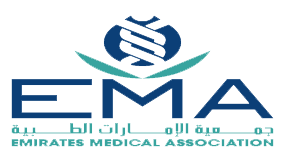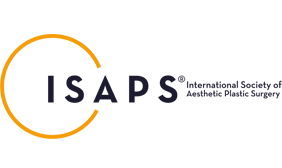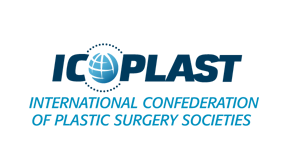Can Fat from Liposuction Be Used for Breast Augmentation?
What is Fat Transfer Breast Augmentation?
Fat transfer breast augmentation, also known as autologous fat grafting, is a revolutionary cosmetic procedure that uses a patient’s own fat to enhance breast size and shape. This innovative technique combines liposuction with breast enhancement, offering a natural alternative to traditional implants.
Fat Removal Costs can vary depending on the type of procedure and the area being treated some people save money for months or years to afford Fat Removal Costs
How It Differs from Traditional Breast Augmentation
Unlike traditional breast augmentation that relies on silicone or saline implants, fat transfer uses the patient’s own adipose tissue. This approach eliminates the need for foreign objects in the body, reducing the risk of rejection or allergic reactions.
Benefits of Using Fat from Liposuction
Using fat from liposuction for breast augmentation offers several advantages:
Book A Consultation With Dr Shehzadi Tasneem
Top-rated Plastic Surgeon For Liposuction in Dubai
Installment Plan Available
- Natural-looking results
- Dual contouring benefits
- Reduced risk of complications associated with implants
- Minimal scarring
Traditional Implants | Fat Transfer |
Foreign material | Natural tissue |
Larger incisions | Minimal scarring |
Risk of rupture | No rupture risk |
Single area enhancement | Dual area enhancement |
Who is a Good Candidate for Fat Transfer Breast Augmentation?
Ideal Candidates
The best candidates for fat transfer breast augmentation are:
- Women seeking modest breast enhancement
- Those with adequate fat deposits for harvesting
- Individuals desiring a natural look and feel
- Patients wanting to avoid implants
Who Should Avoid This Procedure?
Some individuals may not be suitable for this procedure, including:
- Those with very low body fat
- Women desiring significant breast enlargement
- Patients with certain medical conditions affecting healing
Dr. Shehzadi Tasneem Sultan carefully evaluates each patient to determine their suitability for fat transfer breast augmentation.
Procedure Details
How Fat Transfer Breast Augmentation is Performed
The fat transfer breast augmentation procedure involves three main steps:
Liposuction Process
Liposuction is performed to harvest fat from areas with excess deposits, such as the abdomen, thighs, or flanks. This step not only provides the fat for transfer but also contours the donor areas.
Fat Purification and Injection
The harvested fat is purified and processed to remove impurities and non-viable cells. The prepared fat is then carefully injected into the breasts to achieve the desired shape and volume.
Type of Anesthesia Used
The procedure is typically performed under local anesthesia with sedation or general anesthesia, depending on the extent of liposuction and the patient’s preferences.
- Local anesthesia with sedation: Minimizes risks associated with general anesthesia
- General anesthesia: Ensures complete comfort during more extensive procedures
Risks and Safety Concerns
Common Risks
While fat transfer breast augmentation is generally safe, it’s important to be aware of potential risks:
Fat Necrosis
Fat necrosis occurs when transferred fat cells die, potentially leading to lumps or calcifications in the breast tissue.
Infection
As with any surgical procedure, there’s a risk of infection, although it’s relatively low with proper surgical techniques and aftercare.
Fat Reabsorption
The body may reabsorb some of the transferred fat, potentially affecting the final results and necessitating additional procedures.
Additional Safety Concerns
Other safety considerations include:
- Asymmetry
- Changes in breast sensation
- Interference with mammogram readings
Dr. Shehzadi Tasneem Sultan prioritizes patient safety and discusses all potential risks during the consultation process.
Benefits of Fat Transfer Breast Augmentation Over Implants 
Natural Look and Feel
Fat transfer results in breasts that look and feel completely natural, as they’re composed of the patient’s own tissue.
Dual Benefits of Liposuction and Augmentation
This procedure offers the added benefit of body contouring through liposuction, enhancing overall body proportions.
Lower Risk of Allergic Reactions
Using the patient’s own fat eliminates the risk of allergic reactions associated with foreign implants.
- No risk of implant rupture or leakage
- Avoids long-term implant-related complications
- Potential for improved skin texture in the breast area
Cons of Fat Transfer Breast Augmentation
Potential Need for Multiple Procedures
Due to fat reabsorption, some patients may require multiple sessions to achieve their desired results.
Unpredictable Final Results
The final outcome can be somewhat unpredictable due to variations in fat survival rates.
Limited Increase in Breast Size
Fat transfer typically offers a more modest size increase compared to traditional implants.
Pros | Cons |
Natural results | Limited size increase |
Dual contouring | Unpredictable results |
Lower complication risk | Potential multiple procedures |
Recovery and Aftercare
What to Expect During Recovery
Recovery from fat transfer breast augmentation is generally quicker than traditional implant surgery. Patients can expect:
- Mild discomfort and swelling in both donor and recipient areas
- Bruising that typically resolves within 2-3 weeks
- Gradual improvement in breast appearance over several months
Tips for a Smooth Recovery
To ensure optimal results and a smooth recovery:
- Wear compression garments as directed
- Avoid strenuous activities for at least 2-3 weeks
- Follow all post-operative instructions provided by Dr. Shehzadi Tasneem Sultan
When to Call Dr Shehzadi Tasneem Sultan
Contact Dr. Sultan immediately if you experience: Cosmetic surgeons perform liposuction to remove extra fat from specific body areas This procedure helps people achieve a slimmer appearance and improve their body shape Sustained liposuction results mean the fat removed during the procedure stays gone for a long time
Pregnancy glutathione concerns involve worries about low levels of this important antioxidant in expecting mothers Glutathione helps protect the baby from harmful substances and supports healthy development during pregnancy Axillary reshaping results can make your underarms look smoother and more toned This procedure helps reduce excess skin and fat in the armpit area for a neater appearance
Foam garment washable Airflow fat extraction uses strong air to remove extra fat from food This method helps make food healthier without changing its taste or texture Local affordable liposuction
Refined body contouring helps shape your body by removing extra fat and tightening skin
- Excessive pain or swelling
- Signs of infection (fever, redness, discharge)
- Sudden changes in breast appearance or sensation
Impact on Breast Cancer Risk and Mammograms 
Does Fat Transfer Affect Breast Cancer Risk?
Current research suggests that fat transfer breast augmentation does not increase breast cancer risk. However, long-term studies are ongoing.
How It Impacts Mammogram Results
Fat transfer can potentially affect mammogram readings:
- May cause calcifications or changes in breast tissue appearance
- Patients should inform mammogram technicians about their fat transfer procedure
- Additional imaging techniques may be necessary for accurate screening
Frequently Asked Questions
Can fat from liposuction be used for breast augmentation?
Yes, fat from liposuction can be used for breast augmentation. This procedure, known as fat transfer breast augmentation, involves harvesting fat from areas of the body with excess deposits and injecting it into the breasts to enhance their size and shape. It offers a natural alternative to traditional implants.
How long does a fat transfer breast augmentation last?
Fat transfer breast augmentation results can be long-lasting, but some fat reabsorption is normal. Generally, about 50-70% of the transferred fat remains permanently. The longevity of results can vary depending on factors such as the patient’s metabolism, lifestyle, and the surgeon’s technique.
What are the risks of fat transfer breast augmentation?
The risks of fat transfer breast augmentation include fat necrosis, infection, and uneven fat absorption. There’s also a possibility of calcifications forming in the breast tissue, which could potentially interfere with mammogram readings. However, these risks are generally lower compared to those associated with traditional implants.
What is the cost of fat transfer breast augmentation?
The cost of fat transfer breast augmentation varies depending on factors such as the surgeon’s experience, geographic location, and the extent of the procedure. Generally, it can range from $6,000 to $12,000. It’s important to note that this procedure is typically considered cosmetic and not covered by insurance.
How do I schedule a consultation with Dr Shehzadi Tasneem Sultan?
To schedule a consultation with Dr. Shehzadi Tasneem Sultan, you can contact her office directly by phone or through her website. During the consultation, Dr. Sultan will assess your individual case, discuss your goals, and determine if you’re a good candidate for fat transfer breast augmentation.












